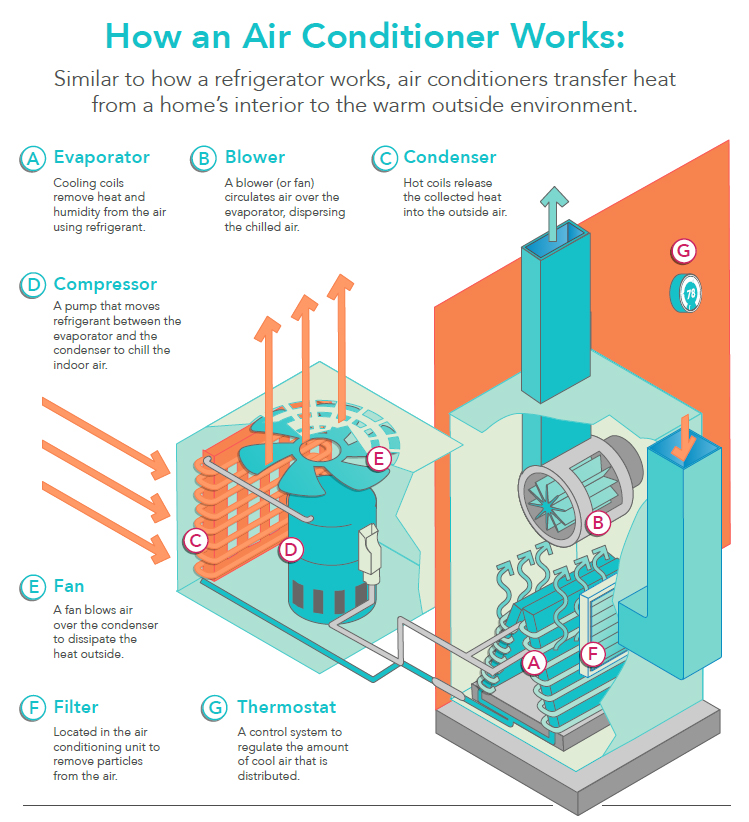What is air conditioner?
An air conditioner is a device that is used to cool and dehumidify the air in a room or building. It works by using a refrigerant to absorb heat from the air inside the room or building, and then releasing that heat outside. An air conditioner consists of several main components, including a compressor, a condenser, an expansion valve or metering device, and an evaporator. The compressor compresses the refrigerant, causing it to become hot and high-pressure. The hot, high-pressure refrigerant then flows through the condenser, where it releases its heat to the outside air and cools down. The cooled, high-pressure liquid refrigerant then flows through the expansion valve or metering device, which reduces the pressure of the refrigerant and allows it to expand and cool even further. The cooled, low-pressure refrigerant then flows through the evaporator, where it absorbs heat from the air inside the room or building, cooling and dehumidifying the air. The cooled, dehumidified air is then blown into the room or building by a fan, while the refrigerant returns to the compressor to start the process over again.
How does aircon work? step by step process
An air conditioner works by using a refrigerant to cool and dehumidify the air in a room or building. Here we explains how its work a step-by-step.

- The air conditioner draws in hot air from the room through a return air grill or grille.
- The hot air is then blown over a set of cooling coils or tubes that contain refrigerant. The refrigerant is a chemical that absorbs heat as it changes from a liquid to a gas.
- As the hot air blows over the cooling coils, the refrigerant absorbs the heat from the air, causing it to evaporate into a gas.
- The refrigerant gas is then compressed by a compressor, which increases the temperature and pressure of the gas.
- The hot, high-pressure gas is then passed through a set of condenser coils or tubes, which are located outside the building. As the gas passes through the condenser coils, it gives off heat, causing it to condense back into a liquid.
- The cooled, high-pressure liquid refrigerant is then passed through an expansion valve, which reduces the pressure and temperature of the refrigerant. This causes the refrigerant to expand and evaporate into a gas again.
- The refrigerant gas is then passed through the evaporator coils, which are located inside the building. As the gas evaporates, it absorbs heat from the air inside the building, cooling it down.
- The cooled air is then blown back into the room by a fan, and the cycle starts over again.


